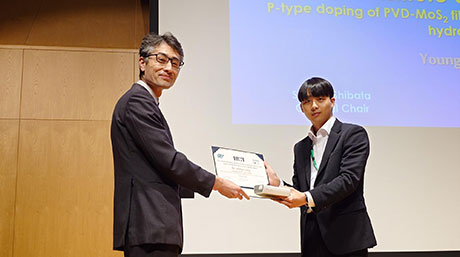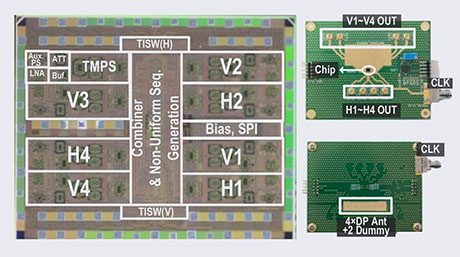Electrical and Electronic Engineering News
Gearing up for 5G: A miniature, low-cost transceiver for fast, reliable communications
Researchers at Tokyo Tech have designed a 28 GHz transceiver that integrates beamforming1 with dual-polarized multiple-input and multiple-output (MIMO2) technology. Measuring just 3 mm by 4 mm, this tiny transceiver could help improve performances of fifth-generation cellular network (5G) and Internet of Things (IoT) devices.
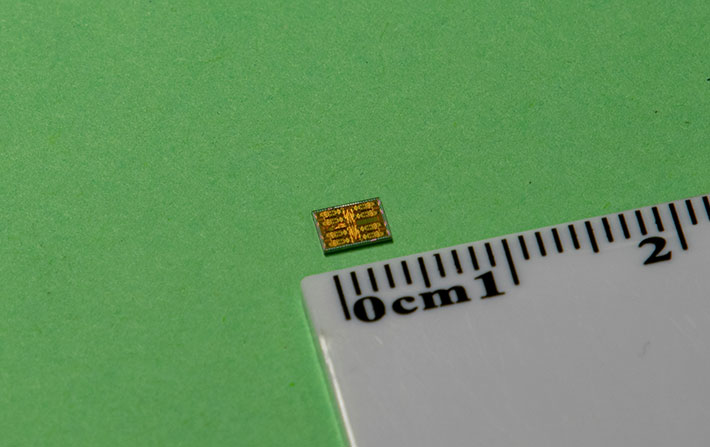
Figure 1. The new transceiver measures only 3 mm x 4 mm
The proposed chip, fabricated in a standard 65-nanometer CMOS process, takes up a total area of just 12 mm2.
A team of researchers led by Kenichi Okada at Tokyo Tech's Department of Electrical and Electronic Engineering has devised a strategy with a clear eye on supporting high-speed mobile data access using the millimeter-wave spectrum for 5G, the highly-anticipated wireless network of the near future.
Their proposed 28-GHz transceiver combines beamforming, a very efficient signal processing method, with dual-polarized MIMO capabilities, meaning that its array of antennas can respond to both horizontal and vertical radio waves at the same time.
Preliminary testing showed that the maximum data rate achieved was 15 gigabits per second (Gb/s) in the 64-QAM format. This data rate is 25 percent higher than that achieved by previous comparable models.
As a continuation of Okada and his group's work on developing top-level transceivers using minimal components, the researchers achieved a design that fits into an area measuring just 3 mm by 4 mm, which is around half the size achieved to date (see Figures 1 and 2). The smaller the chip, the better for 5G, owing to the anticipated demand for high-performance, area-efficient transceivers for use in tiny and portable sensors and devices.
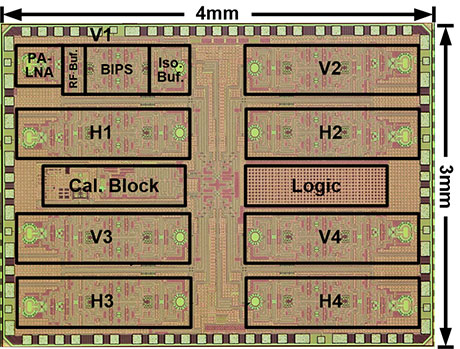
Figure 2. Image of the new transceiver designed for 5G
The transceiver consists of a total of four horizontal (H1–4) and four vertical (V1–4) array orientations.
"Compared with the conventional switch-based bi-directional approach, our bi-directional amplifier completely shares the inter-stage matching networks between the transceiver and the receiver. Thus, the required on-chip area is further minimized," Okada explains. (See Figure 3.)
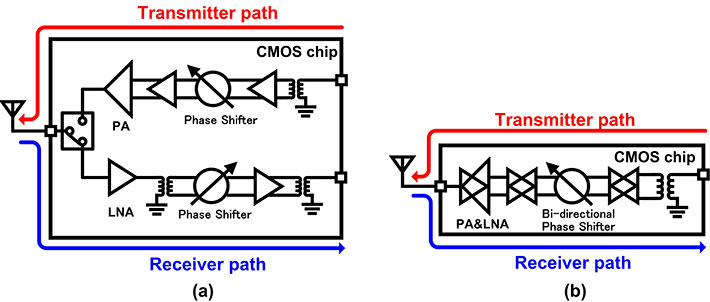
Figure 3.(a) The conventional transceiver structure and (b) the newly proposed bi-directional transceiver structure, which is much more compact
Japan is currently stepping up efforts to prepare for 5G ahead of the Tokyo 2020 Olympic and Paralympic Games. There are big hopes for 5G services to enable higher data throughput for applications such as live-streaming high-definition (HD) video and for potentially trillions of new IoT devices that can share data around the clock, as well as to increase the speed and responsiveness of communication networks overall.
The research was partially supported by SCOPE, an initiative led by Japan's Ministry of Internal Affairs and Communications that focuses on promoting innovations in information and communication technologies.
Further details of the study are being presented as part of the 4G/5G Transceivers Session at the 2019 International Solid-State Circuits Conference![]() (ISSCC) to be held in San Francisco from 17 to 21 February 2019.
(ISSCC) to be held in San Francisco from 17 to 21 February 2019.
A signal processing technique that involves "pointing" antenna arrays in optimal directions.
A technology that utilizes multiple antennas at both ends of the transceiver (transmitter and receiver) to boost data rates.
Reference
| Authors : | Pang, J. et al. Tokyo Institute of Technology, Japan |
|---|---|
| Session : | Session 21: 4G/5G Transceivers |
| Session title : | A 28GHz CMOS Phased-Array Beamformer Utilizing Neutralized Bi-Directional Technique Supporting Dual-Polarized MIMO for 5G NR |
| Conference : |
- Tinier and less power-hungry quantum atomic clock push toward intelligent IoT | Tokyo Tech News
- An ultra-low-power frequency synthesizer targeted for IoT devices: Digital PLL achieves a power consumption of 0.265 mW | Tokyo Tech News
- Tokyo Tech slashes power consumption in Bluetooth Low-Energy transceiver by more than half | Tokyo Tech News
- New 28-GHz transceiver paves the way for future 5G devices | Tokyo Tech News
- Ultra high-speed IC capable of wireless transmission of 100 gigabits per second in a 300 GHz band | Tokyo Tech News
- Speeding up adoption of 5G! Wireless transmission speeds of 120 Gbps achieved | Tokyo Tech News
- Kenichi Okada - Wiring the world wirelessly | Research Stories | Research
- Matsuzawa and Okada Laboratory won NE Analog Innovation Award | Electrical and Electronic Engineering News
- Okada Lab.
- Researcher Profile | Tokyo Tech STAR Search - Kenichi Okada
- Latest Research News
School of Engineering
—Creating New Industries and Advancing Civilization—
Information on School of Engineering inaugurated in April 2016
Further Information
Associate Professor Kenichi Okada
School of Engineering, Tokyo Institute of Technology
Email okada@ee.e.titech.ac.jp
Tel +81-3-5734 -3764
Contact
Public Relations Section, Tokyo Institute of Technology
Email media@jim.titech.ac.jp
Tel +81-3-5734-2975


